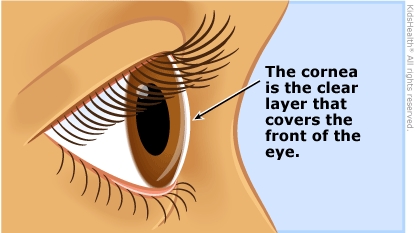Astigmatism happens when the cornea and/or the lens of the eye do not curve evenly. This causes problems in both close-up vision and distance vision. Glasses or contact lenses can help your child see clearly.


If eyeglasses were prescribed for the astigmatism, encourage your child to wear them. Here are some tips:
If your child wears contact lenses, these should be cleaned, cared for, and/or thrown away according to your health care provider's instructions.
Follow up with the eye doctor as instructed.

Your child:

What happens in astigmatism? The cornea is the clear outer layer that covers the front of the eye. It works with the lens and other parts of the eye to let light inside the eye so we can see. When a person has astigmatism, either the cornea, the lens, or both have an uneven curve. Because of the curve, the picture that the brain sees is blurry or warped.
What problems does astigmatism cause? Kids with astigmatism may squint a lot, get headaches, or have eye strain. Astigmatism can cause "lazy eye" (amblyopia), when the brain ignores the blurred image from one eye, leading to some loss of vision in that eye.